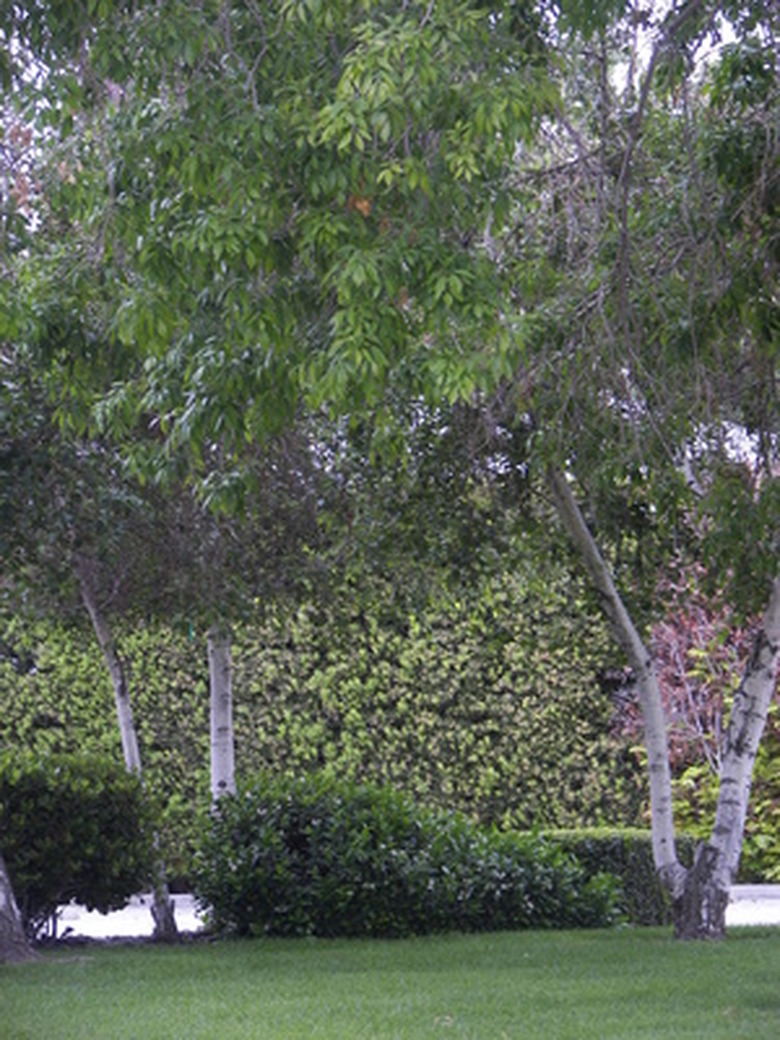Birch Tree Blight
Birches make striking ornamental trees. Whether you live in the South and choose a delicate-skinned river birch or you plant a hardy white paper birch in the North, cool soil on its roots and plenty of sunshine on its top will go a long way toward keeping your tree healthy. The sudden death of your birch tree's foliage should signal that it needs some serious attention.
Identification
Blight, according to Cornell University's Department of Plant Pathology, is a "general term applied to any of a wide range of unrelated plant diseases" that is "characterized by rapid and extensive death of plant foliage." Birch blight consists of small brown spots with yellow edges that grow and multiply until the leaf loses its ability to produce chlorophyll, dies and drops off the tree.
Types
Anthracnose is the main blight that afflicts birch foliage. The disease is caused by the fungi Gnomonia setacea and Cylindrosporella microsperma in yellow birches and Gloeosporium betularum in white birches. Anthracnose blight is most common during cool, moist springs that allow the fungi to grow well. Blights can also result from late freezes and chlorosis.
- Birches make striking ornamental trees.
- Anthracnose is the main blight that afflicts birch foliage.
Significance
Leaf blights seldom kill birch trees but if blights occur in successive years, blights may weaken the tree and make it more susceptible to bronze birch borer, the birch tree's only deadly pest. Blight may also signal that a tree is planted in soil that is too alkaline or in a location where it does not get enough light or air circulation. All of these factors can also shorten the normal 40 to 50 year life span of a birch tree.
Prevention/Solution
Not all blight is preventable but some simple cultural steps can reduce its probability. Buy a native tree raised in a local nursery so that your tree is completely at home in your climate. Have your soil tested at your local agricultural extension; the pH should be between 5.0 and 6.5 to avoid chlorosis. Add compost to lighten clay soil and improve drainage. Give each tree room for air to circulate–at least 20 feet from buildings and other trees. Mulch trees to help keep roots shaded. Rake up blighted leaves immediately and move them away from the tree to an active compost heap or, if your local government allows it, burn them.
- Leaf blights seldom kill birch trees but if blights occur in successive years, blights may weaken the tree and make it more susceptible to bronze birch borer, the birch tree's only deadly pest.
- Rake up blighted leaves immediately and move them away from the tree to an active compost heap or, if your local government allows it, burn them.
Considerations
Watch birch trees carefully in spring for signs of blight. Frost blight is not serious and chlorosis is treated by adding garden lime or sulfur to adjust soil pH. Fungicide sprays for anthracnose help if they are applied early during rainier than normal springs. Follow label directions carefully; most sprays require one or two repeat applications. Keep an eye out for brown trails in leaves or sparse, stunted leaves in the upper part of the tree; the former is a sign of the birch leafminer and the latter of the bronze birch borer.
